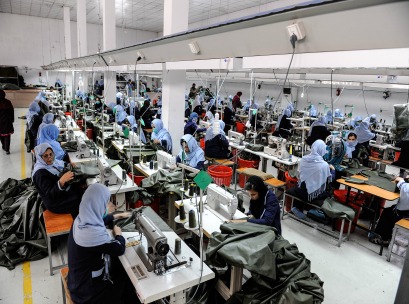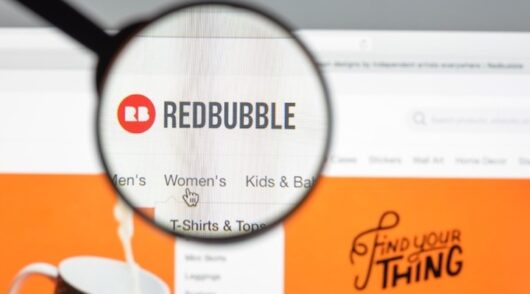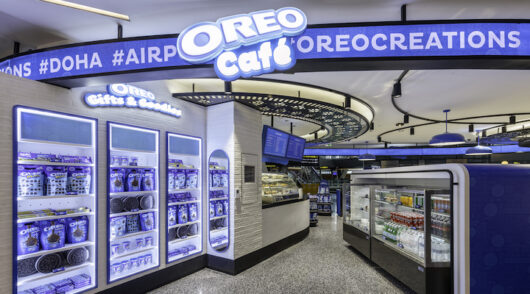 Fashion retailers have been urged to lift pay for factory garment workers following a new report on the meagre wages.
Fashion retailers have been urged to lift pay for factory garment workers following a new report on the meagre wages.
Only four per cent of the price we pay in Australia goes towards the wages of factory workers, predominantly in Asia, according to a report commissioned by Oxfam and released on Sunday.
That’s 40 cents out of the price of a $10 t-shirt.
As little as two per cent of the price of a piece of clothing sold in Australia makes it to the pockets of workers who are being paid poverty wages by the booming fashion industry, according to the new Oxfam report.
The report, What She Makes, shows that while many leading and iconic Australian fashion brands are enjoying increases in revenue, the workers making our clothes – the vast majority of whom are women – are trapped in a cycle of poverty.
It would take a Bangladeshi worker earning the minimum wage more than 4000 years to earn the same amount fashion industry CEOs get paid in just one year.
“The women making the clothes Australians love and wear are being denied decent lives by being paid poverty wages and are unable to afford even the basics no matter how hard they work,” Oxfam Australia chief executive Helen Szoke said.
“Women are working six-day weeks and as much overtime as they can, yet they are forced to live in slums, often separated from their children and families and going hungry as they struggle to make it to their next pay.”
Oxfam wants Australian brands to pledge to increase workers’ wages within three to six years by working with unions, factory owners and governments.
The cost to companies, or consumers, would be an increase of one per cent to the price of a piece of clothing, according to Oxfam.
“The actual additional cost is so low. And companies are conscious that they want to present themselves as a good business, and how it deals with the supply chain is an integral part of that,” Szoke said.
The turnover in the garment industry was $27 billion in 2016, according to the report.
Retailers named in the research report, conducted by Deloitte Access Economics, include Kmart, H&M, Target and Speciality Fashion Group (Katies, Millers, Rivers, City Chic).
Szoke says people should not boycott their favourite brands, because that would take wages away from the workers altogether.
“We encourage people to tell their favourite designers their concerns and to sign up to make a commitment for change,” Szoke told AAP.
After the Rana Plaza factory collapse that killed more than 1100 people in Bangladesh in 2013, Australian consumers pushed for a change in safety standards.
In response, almost all of Australia’s biggest brands joined the Bangladesh Fire and Building Safety Accord.
Companies have also been asked to keep their business in countries that increase their minimum wage to stave off fears of fashion brands relocating.
“Fashion is big business in Australia – turning over $27 billion last year alone and growing at four per cent a year,” said Szoke. “Yet the women who make our clothes remain entrenched in lives of poverty, paid as little as 39 cents an hour. It is time for this grossly unfair system to change.”
In Bangladesh, garment worker Anju describes her struggle to pay of debts to her landlord and debts at the local grocery store.
The 25-year-old stitches the front and back of sweaters together for Specialty Fashion Group at a pay rate of 37 cents per hour.
Her pay is based on the quantity of work she produces and not the hours, and if she does not meet her target requirement she is refused pay for the day.
The mother-of-two has described her anguish at sending away her daughters, aged eight and 10, to live with her in laws, because she cannot afford to house them safely in the Dhaka district where she lives for work.
Instead, she only gets to see them twice a year.
“If we got more money, we would stay in a better house. There would be a lot of changes,” she said in the Oxfam report.
WHAT WOMEN MAKE: WAGES IN THE GARMENT INDUSTRY (in AUD)
Bangladesh: 39 cents/hr
Indonesia: 62 cents/hr
Vietnam: 64 cents/hr
India: 82 cents/hr
Cambodia: 92 cents/hr
China: 93 cents/hr
CLOTHING COMPANY REVENUES IN AUSTRALIA, 2016
* Kmart: $5.19b
* Big W: $3.8b
* Target: $3.46b
* Myer: $2.8b
* David Jones: $2.19b
* Cotton On: $1.80b
* Best & Less: $1.16b
* Premier Investments (Just Jeans, Jay Jays, Peter Alexander): $1.05b
(Source: What She Makes report, Oxfam Australia)
Access exclusive analysis, locked news and reports with Inside Retail Weekly. Subscribe today and get our premium print publication delivered to your door every week.





